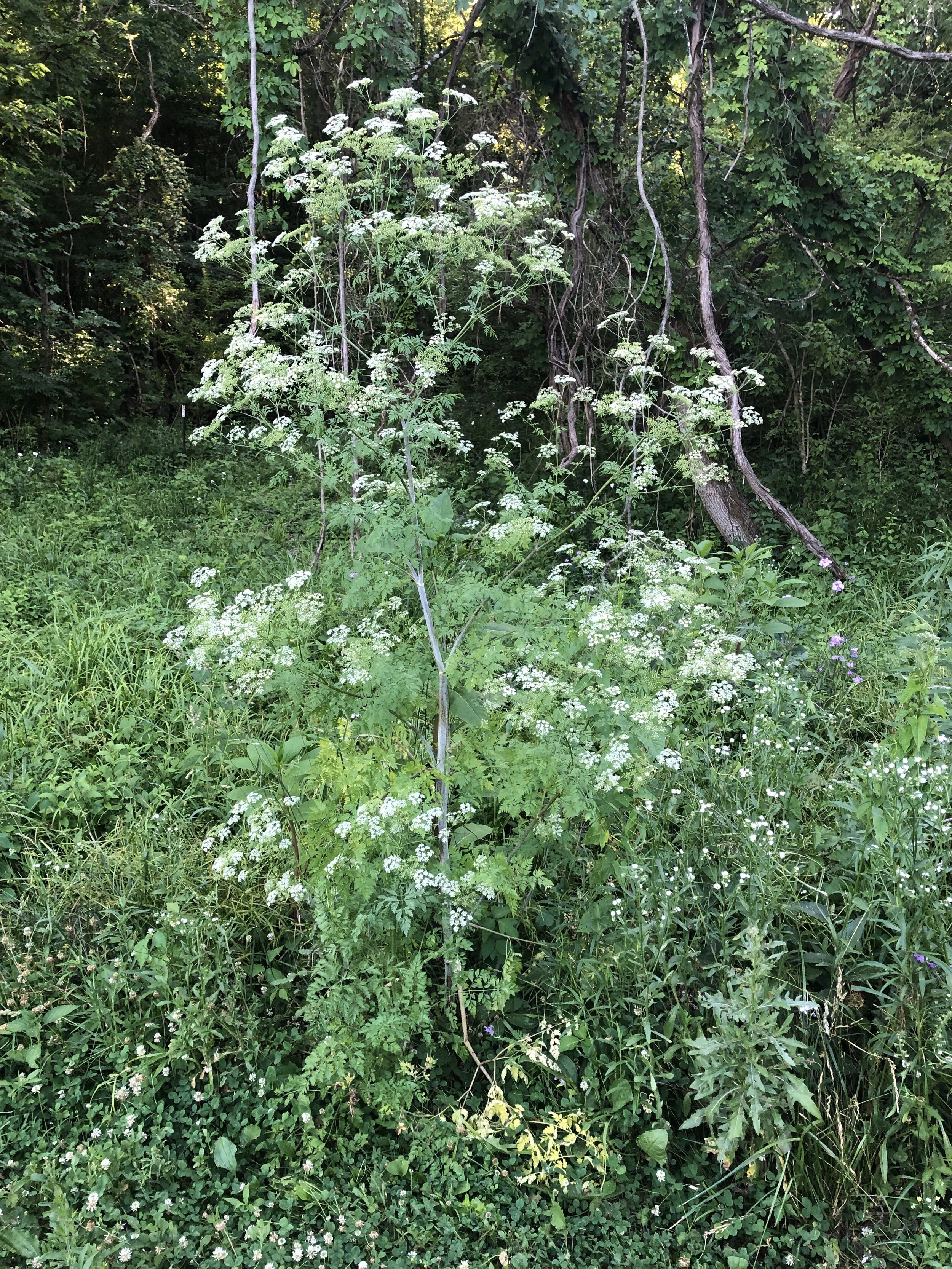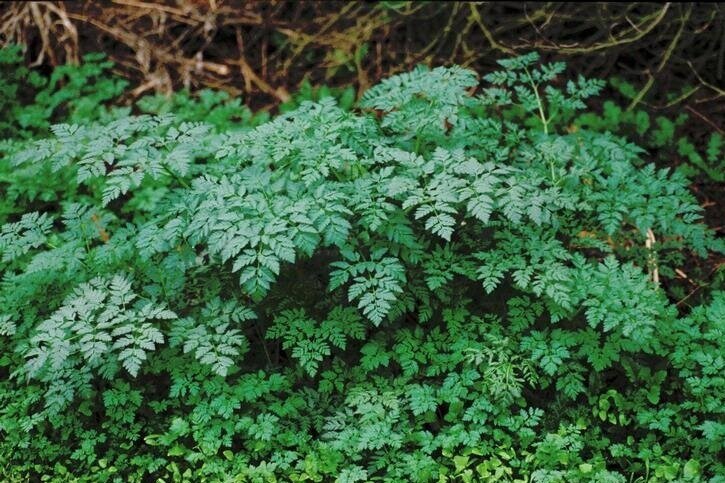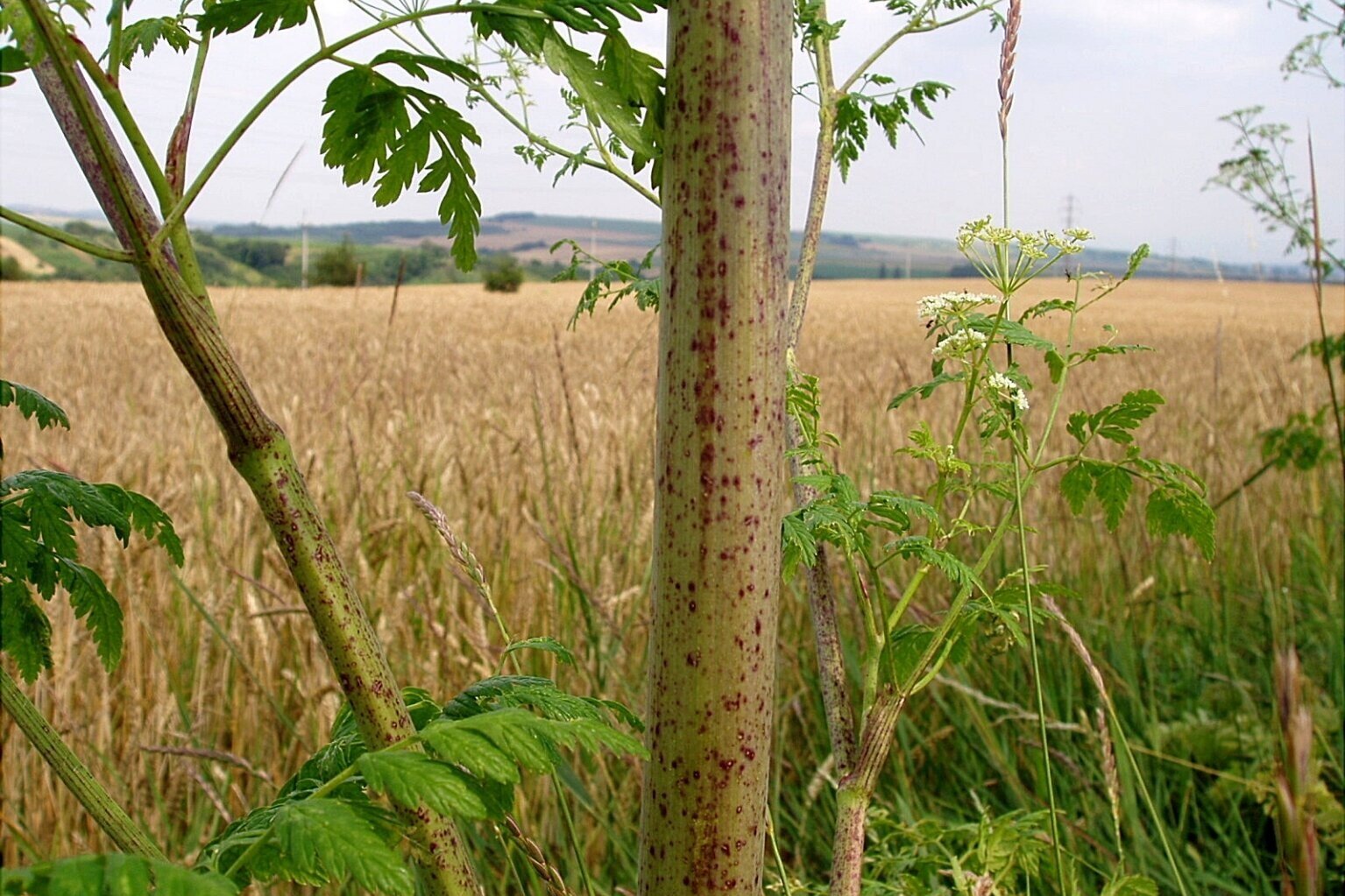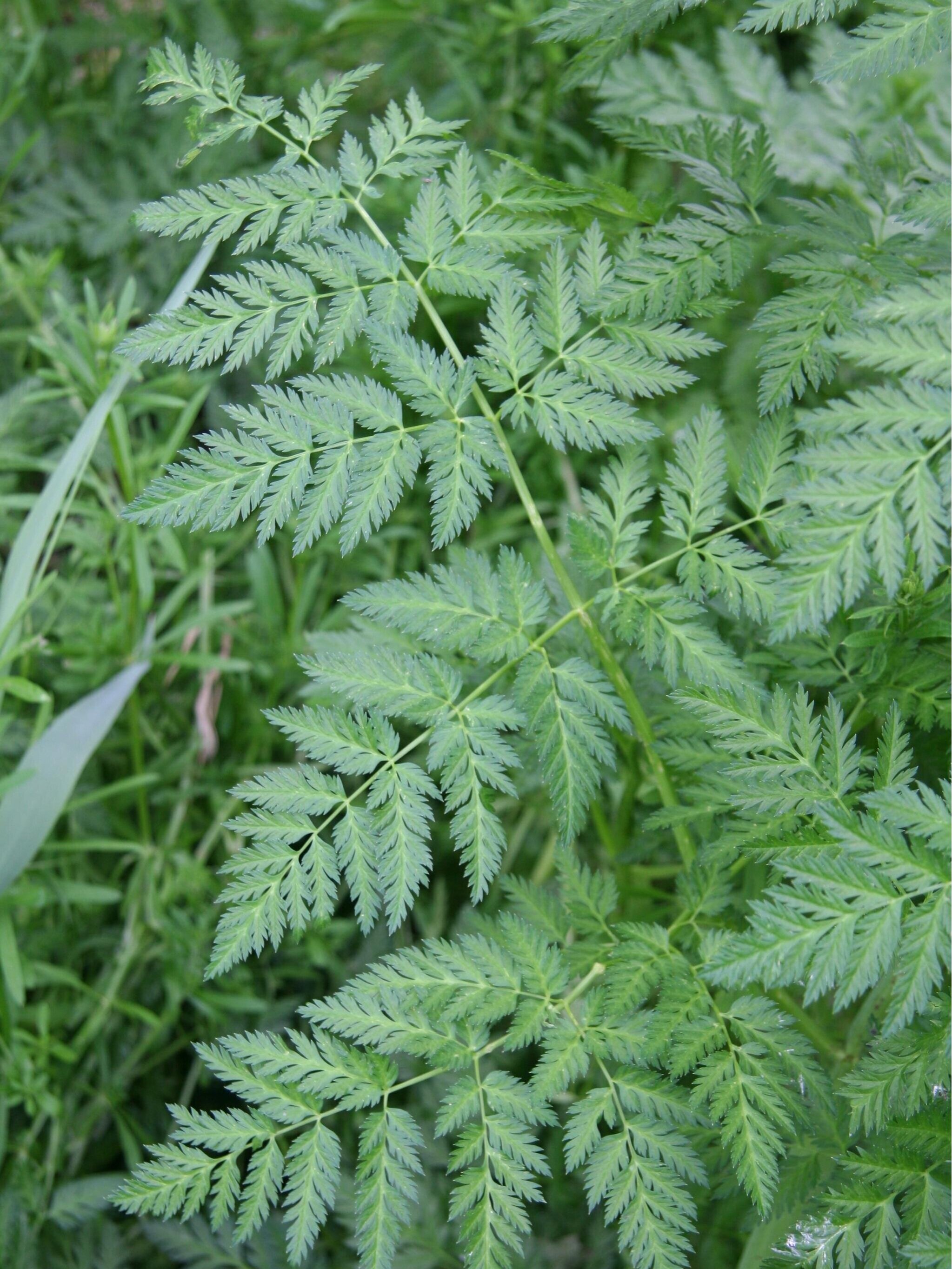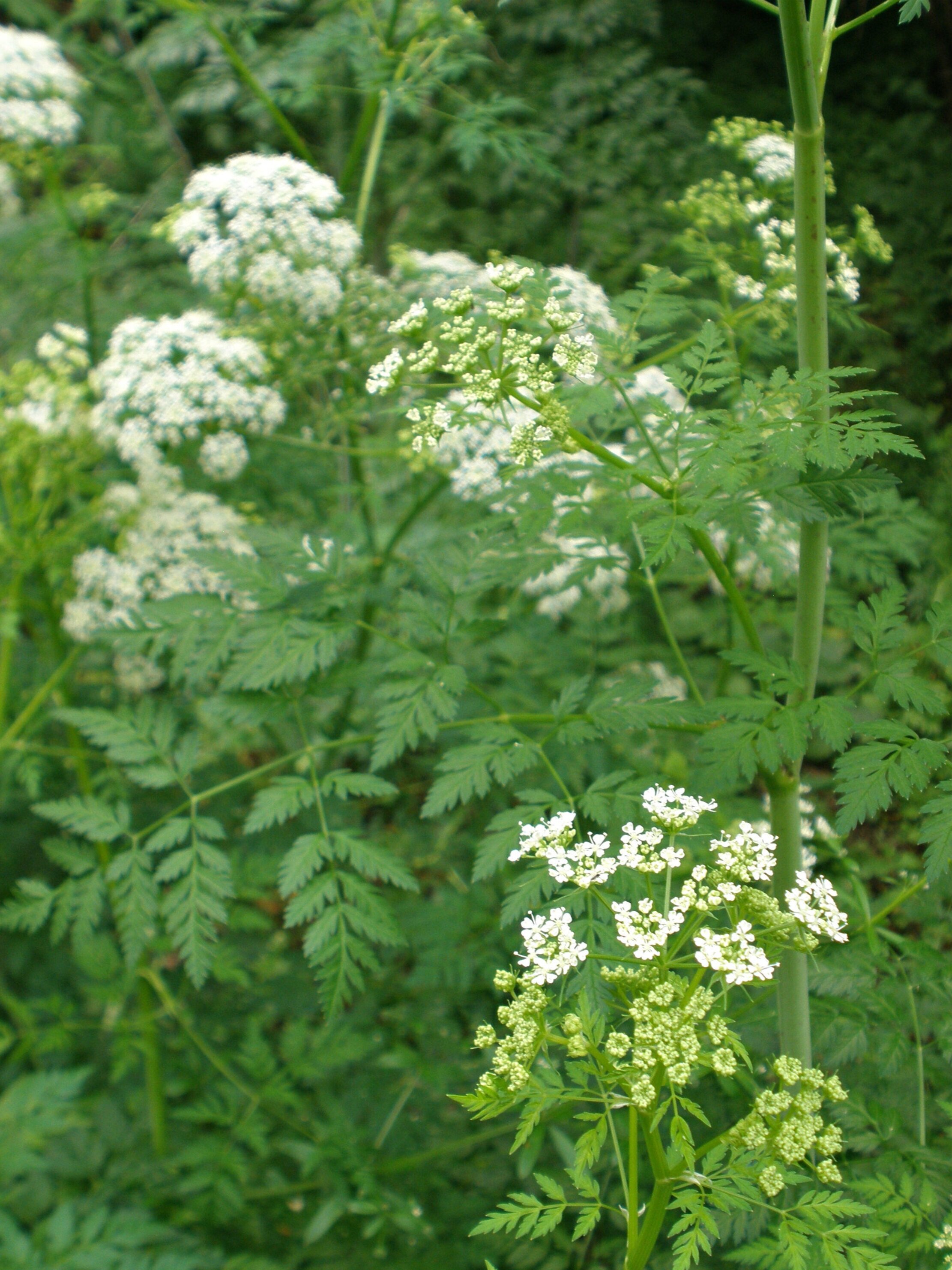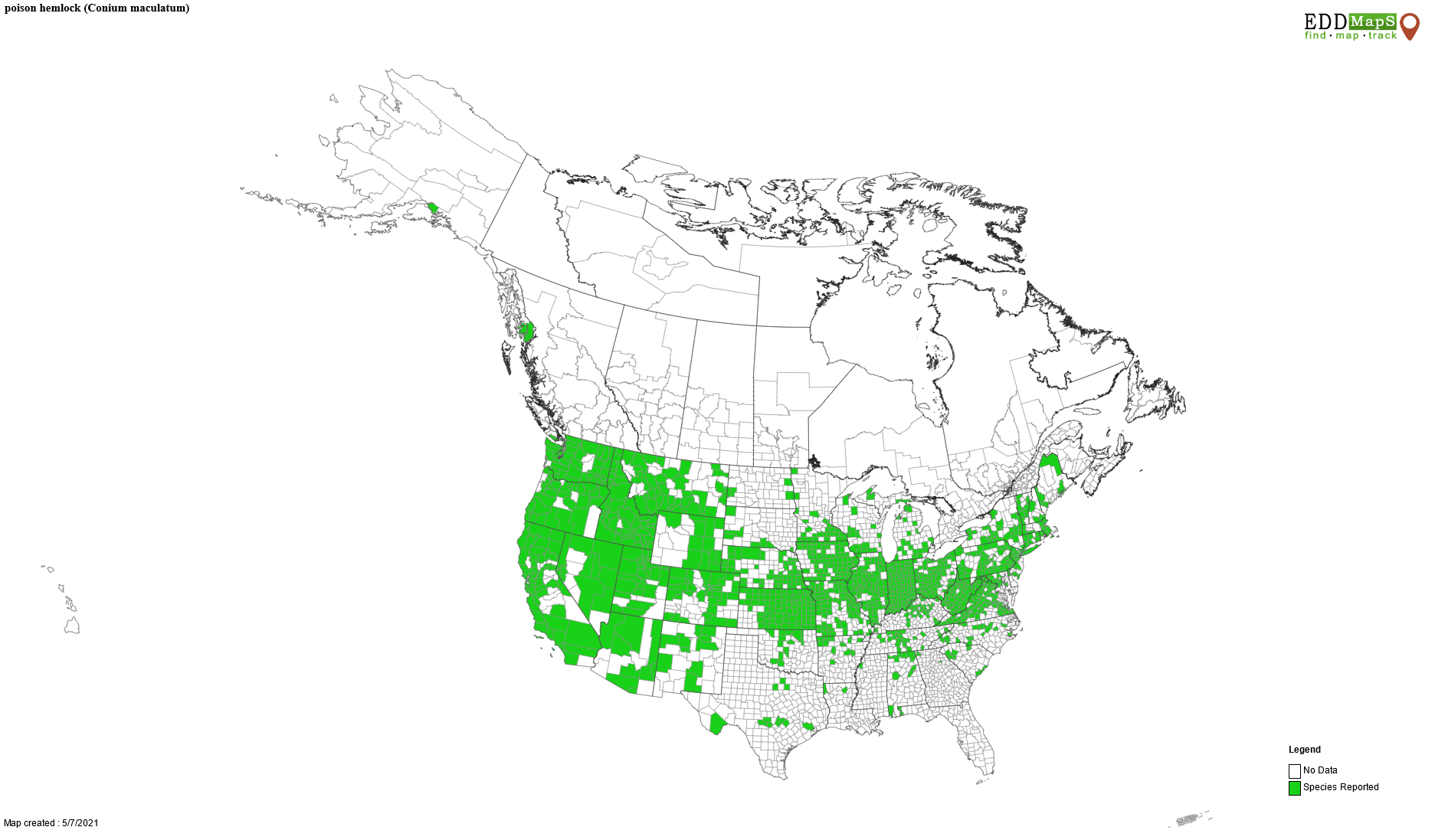May 2021 Invasive Plant of the Month
SICIM Email
Poison Hemlock (Conium maculatum L.)
Also known as deadly hemlock or poison parsley, poison hemlock (Conium maculatum L.) is a highly toxic herbaceous biennial (sometimes short-lived perennial) plant that easily invades disturbed or early successional sites and is typically found in moist areas along roads, streams, trails, ditches, forest edges and waste areas. This plant can be noticed very early in the spring every year, as it is typically one of the first to green up, usually in late February to early March if temperatures are favorable. A native of Eurasia, this species was introduced to North America as an ornamental plant in the early- to mid-19th century and has been reported in all 92 Indiana counties. Poison hemlock is regulated under the Terrestrial Plant Rule and is also one of the Prohibited Noxious Weeds in Indiana.
IDENTIFICATION & BIOLOGY: Poison hemlock is a biennial (sometimes perennial) plant in the Apiaceae family (commonly known as the celery, carrot or parsley family) that reproduces prolifically via seeds that are flattened and ribbed. It is a low-lying rosette the first year and bolts to 3 – 9 feet tall, typically in its second year. The stems are stout, smooth, hollow, with distinctive purple spotting. Flowers are small, white and found in umbrella-shaped clusters in early summer (June-July). The alternate fern-like leaves are pinnately compound and usually triangular in outline. Seeds mature in late summer (August-September) and are easily spread by mowing and agricultural machinery.
LOOK-A-LIKES: Poison hemlock may be confused with the invasive plant Queen Anne’s lace (Daucus carota L.) or the native cow parsnip (Heracleum maximum Bartr.), both of which have white umbrella-shaped flower clusters. Queen Anne’s lace has a hairy stem, while cow parsnip has a ribbed stem. The native marsh hemlock (Cicuta maculata) is also easily mistaken for poison hemlock. Marsh hemlock is usually a smaller plant that bloom in mid- to late summer in wetland habitats. Marsh hemlock has leaf veins that terminate in the notches between the teeth and not the tips of the teeth as in poison hemlock.
HABITAT & DISTRIBUTION: Poison hemlock prefers full sun to light shade, moist conditions, and a fertile loamy soil. It can be found in disturbed areas along edges of degraded wetlands and prairies, low-lying areas along small tributaries, banks of drainage ditches, woodland borders, fence rows, low-lying areas along railroads and roads, pastures, and abandoned fields. It has been reported in every county of Indiana and is now naturalized in almost every state in the United States.
ECOLOGICAL THREAT: The largest threat posed by poison hemlock is that it contains toxic alkaloids that are extremely harmful if ingested by livestock or human. However it can also reduce aesthetic value of landscapes and occasionally invade native habitats, replacing native vegetation by its rapid growth. The plant’s alkaloids may also be absorbed through the skin, so wear long sleeves, pants, closed shoes, and gloves if you are handling poison hemlock. Cases of poisoning due to poison hemlock ingestion are rare as the plants emit a foul odor that makes it undesirable and unpalatable to livestock and humans. Initial symptoms of toxicity – nervousness, trembling, and loss of coordination – will occur within a few hours of ingestion. Followed by depression, coma, and/or death. Consumption and toxicity in animals usually occur in poorly managed or overgrazed pastures where animals are forced to graze poison hemlock because of lack of desirable forage. All parts of this plant (leaves, stem, fruit, and root) are poisonous.
CONTROL: The most effective control may be mowing to prevent seed production, followed with herbicide applications to rosettes and resprouts as outlined in the “Chemical” section below.
WARNING: All parts of this plant are poisonous to both animals and humans. Use caution when managing this plant.
Prevention: Poison hemlock seed often is inadvertently spread by mowing, road maintenance or agricultural machinery. Mow infested areas along roadsides, ditch banks and field edges before seed matures. Avoid working, recreating in or walking or driving through infested areas during seed dispersal. Also, clean clothing, shoes, ATVs or other vehicles following activity in infested areas.
Manual: Can be effective for single plants or very small infestations. Pull or dig up all plants, place in trash bag and dispose of with regular trash. Always wear protective clothing, including gloves and eye protection, to prevent the plant from contacting the skin.
Mechanical: Mowing or cutting may be effective control but must be repeated often because the taproot can send up new shoots after a single mowing. Tilling or grubbing can kill hemlock and prevent seed production, but is generally not recommended because of soil disturbance.
Chemical: Effective for large infestations and for spot spray applications to individuals and clumps of plants. Herbicide application should be performed while the plant is actively growing and before flowering. First-year basal rosettes may be sprayed from midsummer through fall. Second-year plants begin bolting to produce flower stalks in April and begin flowering in mid-May. The following herbicide active ingredients are recommended. For each, follow label directions and use a surfactant to increase effectiveness.
Glyphosate: Use herbicides containing at least a 41% concentration of glyphosate and follow label directions to mix a 2% spray solution plus surfactant. Thoroughly wet all surfaces of the plant, but not to the point of runoff. Use caution as glyphosate is non-selective and will damage or kill any plant it contacts.
2,4-D or Triclopyr: Broadleaf-specific herbicides that will not harm grasses. Most effective on first-year rosettes or very small second-year plants.
IMPORTANT: The pesticide label is the law! When using any chemical control, always read the entire pesticide label carefully, follow all mixing and application instructions and use all personal protective gear and clothing specified. Contact the Office of Indiana State Chemist (OISC) for additional pesticide use requirements, restrictions or recommendations.
Maintenance: Follow-up treatments will be required, as seeds already present in the soil will sprout.
FACT SHEET: https://www.extension.purdue.edu/extmedia/fnr/fnr-437-w.pdf
REFERENCES & OTHER RESOURCES:
https://www.illinoiswildflowers.info/weeds/plants/poison_hemlock.htm
https://www.misin.msu.edu/facts/detail/?project=misin&id=331&cname=Poison+hemlock
https://www.illinoiswildflowers.info/weeds/plants/poison_hemlock.htm
https://extension.entm.purdue.edu/newsletters/pestandcrop/article/poison-hemlock-2/
LOOK-A-LIKE REFERENCES:
https://www.illinoiswildflowers.info/weeds/plants/wild_carrot.htm
https://www.illinoiswildflowers.info/woodland/plants/cow_parsnip.html
https://www.illinoiswildflowers.info/wetland/plants/water_hemlock.htm
#PoisonHemlock #Coniummaculatum #indianainvasiveplants #indianainvasviesinitiative
